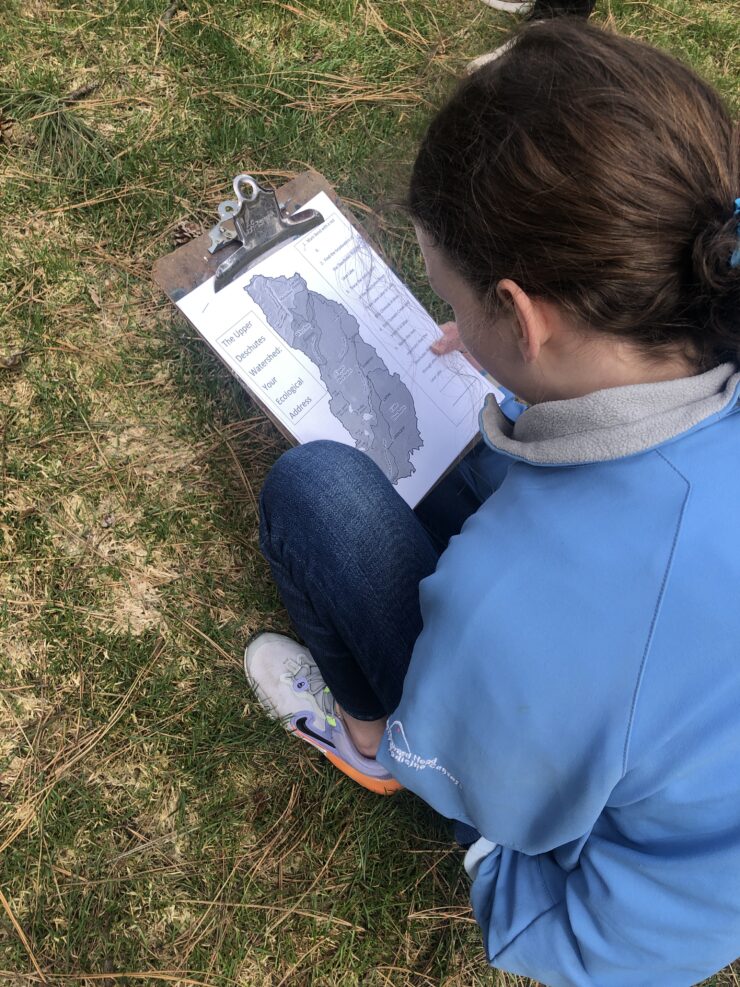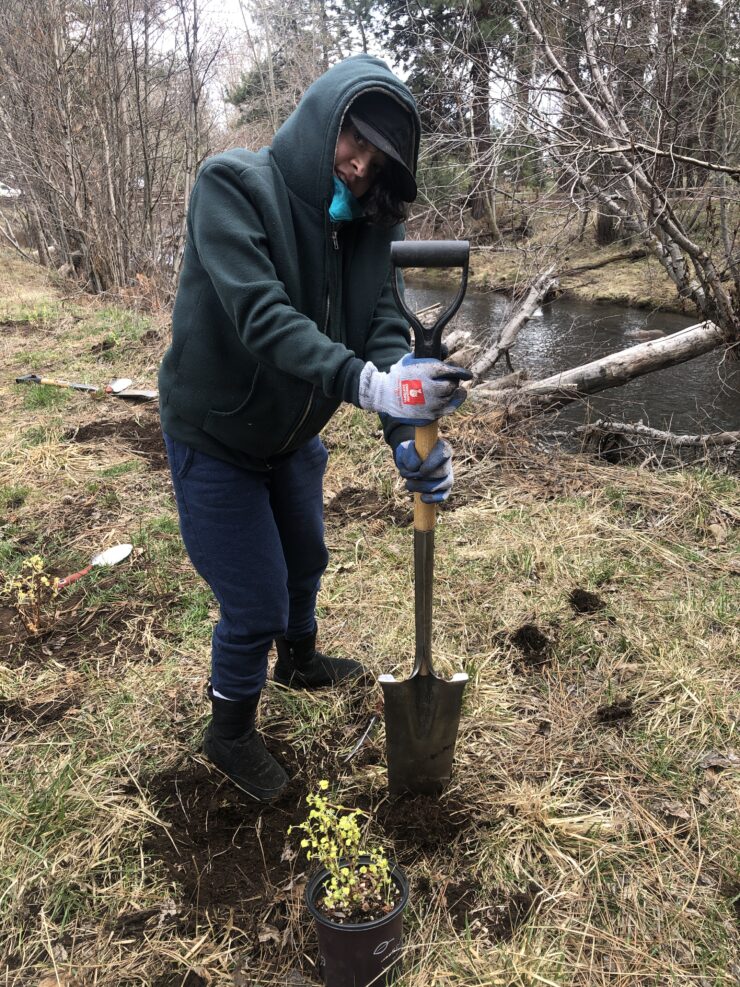The Wonders of a Local Watershed: Teen Connects Youth Plant for Our Future at Creekside Park, Sisters
 What is a watershed? Where might the location of Whychus Creek’s headwaters be? And at the Creekside Park in Sisters, why are there human-made steps going down to Whychus Creek, as well as fencing aligned with its banks, at Creekside Park in Sisters?
What is a watershed? Where might the location of Whychus Creek’s headwaters be? And at the Creekside Park in Sisters, why are there human-made steps going down to Whychus Creek, as well as fencing aligned with its banks, at Creekside Park in Sisters?
These are just a few of the questions posed to a group of our Teen Connects youth who recently participated in a volunteer service project at Whychus Creek in Sisters. The service project was part of our broader Teen Connects program and one of three volunteer initiatives that took place over Spring Break in March. On this particular day, the teens met with Colette Boylan, the Upper Deschutes Watershed Council’s education and outreach coordinator. Colette shared education around watersheds in general, plus history and facts around Whychus Creek, including where its name comes from: “Whychus” is the Native American word for “the place we cross the water.”
 In the case of Whychus Creek, its headwaters originate high up in the Three Sisters Wilderness. Surprising to some of the kids, the creek ran dry and without its native fish in past years due to various constraints on the water, which has been addressed in more recent years with preservation and conservation efforts, as well as water-use policies and regulations.
In the case of Whychus Creek, its headwaters originate high up in the Three Sisters Wilderness. Surprising to some of the kids, the creek ran dry and without its native fish in past years due to various constraints on the water, which has been addressed in more recent years with preservation and conservation efforts, as well as water-use policies and regulations.
As to the steps leading down to the creek and the fencing that is seen at Creekside Park? These are just some of the many features designed to support and sustain the health of the river. They help keep people from walking all over precious vegetation and other natural elements that contribute to the well-being of this watershed—or an area where draining and flowing waters all come together.
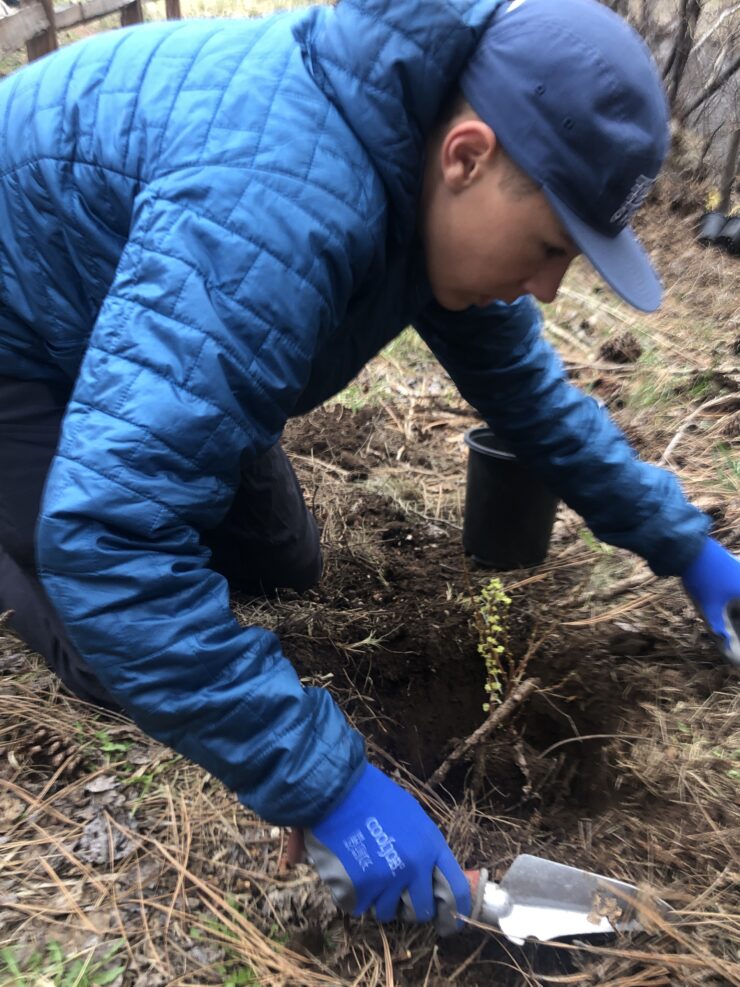
After listening to Colette share such information, studying maps, and touring the creek area, the kids got busy planting up to 50 native plants of two varieties. Throughout the afternoon, they identified prime spots, dug holes, and dropped in the vegetation, patting in the soil around the roots. In some areas, the earth was pretty hard, requiring serious muscle to break up the dirt. Colette moved about, providing planting tips and facilitating the experience throughout the afternoon.
“It will be cool to see these plants grow over time,” said George Roberts, a Teen Connects volunteer who lives in Sisters.
The plants look tiny now, but in years to come and with stronger roots and larger branches, they’ll fortify the banks along the creek and contribute to a more nourishing watershed environment, further restoring vitality and life to this natural asset, helping ensure its viability for years to come.
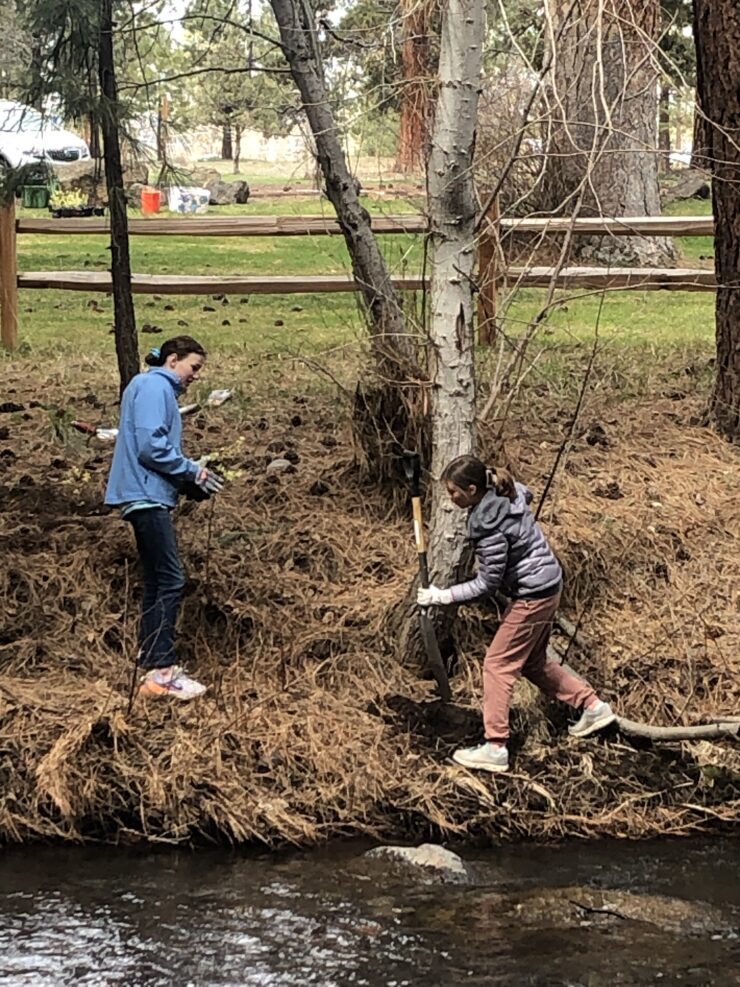
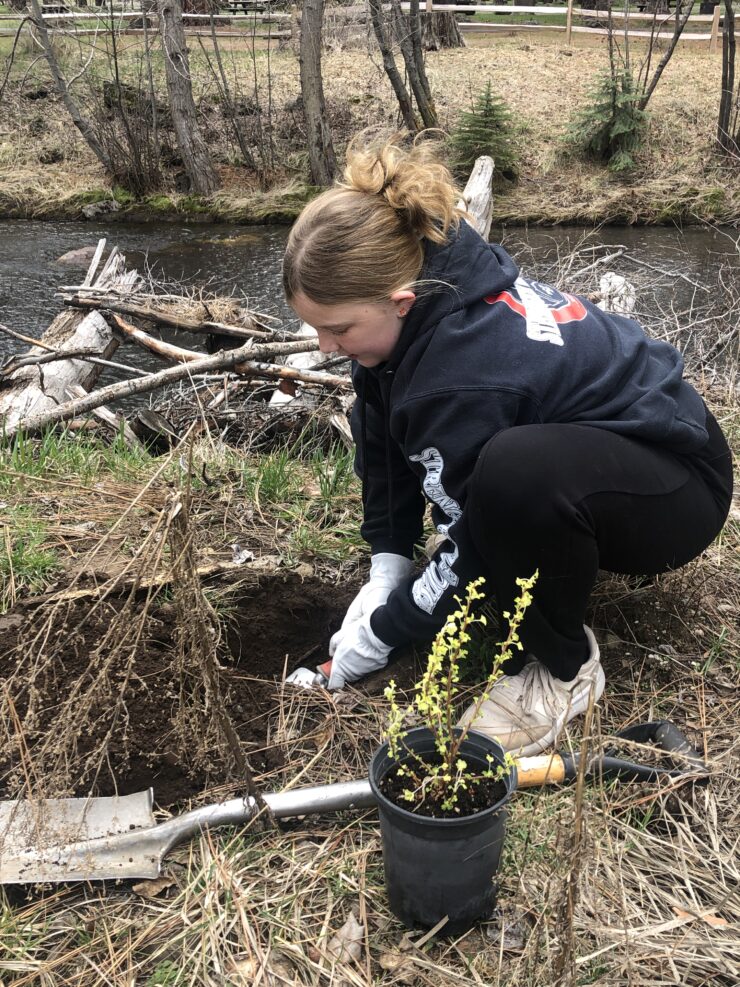 Camp Fire Central Oregon offers year-round opportunities for community service and leadership, including multiple ways to build such skills through summer camp leadership opportunities, summer community service programs, and school-year programs, including some during spring and winter breaks.
Camp Fire Central Oregon offers year-round opportunities for community service and leadership, including multiple ways to build such skills through summer camp leadership opportunities, summer community service programs, and school-year programs, including some during spring and winter breaks.
For more information about school-year teen programs, visit https://campfireco.org/teenconnects/. For summer teen programs, visit: https://campfireco.org/teensummer/.

